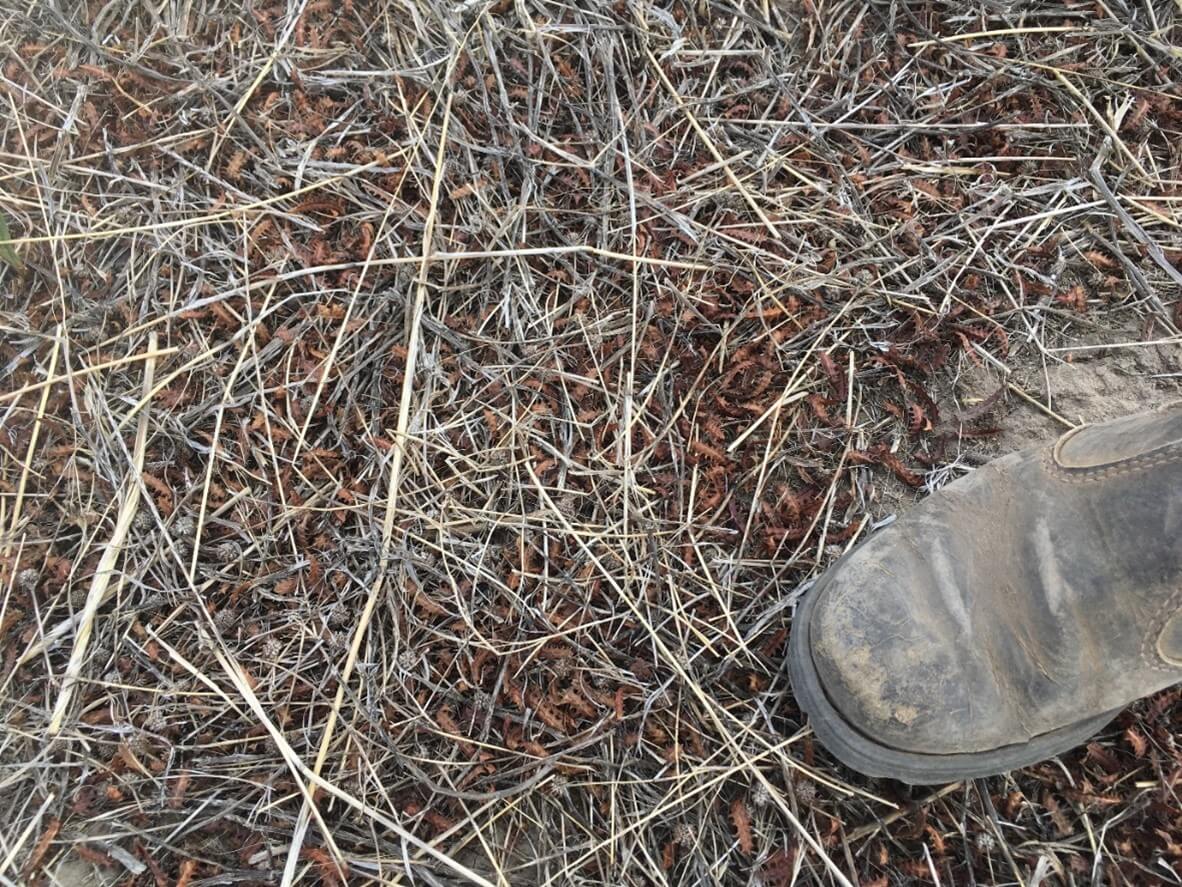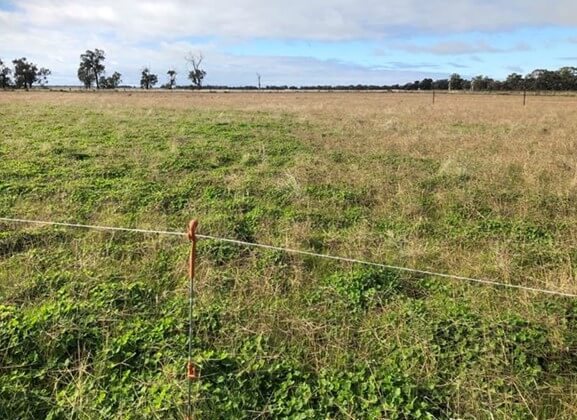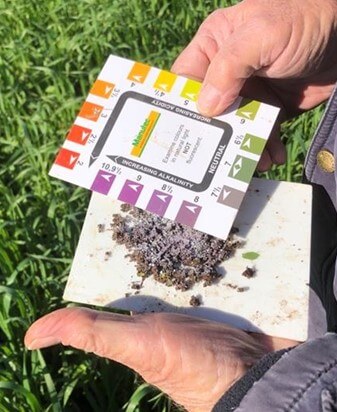Findings from the Building Soil Carbon project
John Fowler, Murray Local Land Services
This report covers the lessons learnt during the first 3 years of the four-year project ‘Building soil carbon in irrigated systems in the Murray Region’. The project is conducted by Murray Local Land Services and is funded by the Australian Government, project ID: RLP-MU08-P7.
Lessons learnt in the Building Soil Carbon project
In the first two years of the project ‘Building Soil Carbon in irrigated systems in the Murray Region’, several important technical issues were highlighted. These were reported on in the first- and second-years report on ‘Lessons Learnt’. They main technical lessons are summarised below.
Main lessons learnt in the first 2 years
- A weed-free seed bed, particularly free of broadleaf weeds, is essential for good pasture establishment. The seed bank of weeds such as capeweed cannot be adequately depleted in one season, so good broadleaf weed control needs to be undertaken for at least 2 or 3 years prior to sowing a legume pasture.
- Subterranean clover competes with broadleaf weeds, especially capeweed, better than most other pasture legumes. It also has a wider range of herbicide tolerance than most other annual pasture legumes, making it the best to sow in situations where broadleaf weed control is less than adequate.
- Species vary substantially in their herbicide sensitivity, hence care needs to be taken when selecting broadleaf selective herbicides. This is especially important for growers whose only previous experience was with sub clover. If they use the same herbicides on other annual legumes as they did on the sub clover, they may cause severe damage.
- Antas sub clover has excellent autumn and spring production (greater than all other sub clover varieties in the trials), but poor persistence is a problem in the third year when grazed by sheep. This is probably due to it not burying the seed as well as other sub varieties.
- Pasture species that set their seed aerially (i.e. at the top of the canopy) require very different spring grazing management than the traditional pasture legume, sub clover, which buries its seed. A heavy grazing of these varieties late in the spring (i.e. once seed has been set) will cause substantial seed loss and subsequent re-establishment failure the following autumn.
- A timely spring irrigation enhances seed set and regeneration of pasture legumes the following season. While this has been well documented in the past, it was again highlighted in these trials. The two sites that were well watered in spring (i.e. Berrigan and Noorong) had substantially higher seedling populations the following autumn than those that did not.
- Many of the annual legume species included in the trials did not persist well into the second and subsequent years, especially when irrigations were limited.
- A suitable rhizobia inoculation technique is essential when sowing pasture legume seed into dry soil (the typical method of establishing irrigated pastures). Most landholders rely on either pre-coated seed to provide viable rhizobia or use peat inoculum; neither of which are reliable. Pre-coated seed is only effective if the duration from coating to sowing is less than six weeks, which it rarely is (this was verified in a survey of irrigated annual pastures in the Murray region which showed that the technique was successful less than 20% of the time). Peat based inoculum works well when seed is sown into moist soil, which is rarely the case when establishing irrigated pastures. Rhizobia mortality is extremely quick in dry soil, so this technique also fails if the seed is not irrigated with in 12 to 24 hours (which is rarely achieved).
- Pasture legume species need to have a significant proportion of hard seed in order to persist after wet summers. Most soft seeded pasture legumes in the trials, such as Maral and Laser persian, performed well in the first year, but did not re-establish in subsequent years.
- The feed quality of pasture legumes during the vegetative growth stage does not vary greatly however their palatability (i.e. preference to be grazed by livestock) does. For example, sheep avoided snail medic plots while ever they had an alternative. They did graze the snail medic, but only once all other varieties had been grazed.
- Pasture height in spring is not a reliable way to compare spring production between different varieties. For example, biserrula that is about 15 cm tall in spring has a very similar biomass to arrowleaf clover that is about 45 cm tall. Pasture height and pasture density both need to be assessed when estimating biomass.
- Lucerne, the only perennial legume in all the trials, performed very well at most sites. Production is low in the establishment year but is quite high in subsequent years.
- Lucerne does well on both light soils (e.g. red loams) and heavy soils (e.g. grey clays), but it can be killed by excessive waterlogging which can be the result of either a poor irrigation layout or when excessive and continuous rainfall occurs after an irrigation has been applied.
- Sub clover and lucerne persisted better than all other species when pastures were not irrigated in the second year.
- Some species, particularly biserrula, have very hard seed which does not break down in time to germinate in the second year.
- Some pasture legume species are not suited to irrigated production in the Murray region.
- Some species that may not be the most suitable for a general pasture that is irregularly irrigated (depending on seasonal water availability), may have specific, niche roles (e.g. arrowleaf clover is an excellent species for hay production).
The above issues were discussed in greater detail in the ‘Lessons learnt reports’ for the first 2 years of the trials.
Lessons learnt in 2022
There were no completely new lessons learnt in 2022 than those indicated above. Some additional minor observations were made, which include:
- Species with poor seedling vigour, such as gland clover, are soon displaced by more vigorous species, such as sub clover and balansa clover.
- Biserrula does not readily germinate in the second year due to its very hard seed. This allows time for other species to colonise the plots, providing strong competition for any biserrula that would normally germinate from years three and onwards.
- The hard seeded persian clover variety SARDI persian, persists well whereas the soft seeded varieties, such as Maral and Laser, do not.
- Addressing soil constraints can lead to substantial pasture yield increases, depending on the severity of the constraint and the pasture species present.
Importance of seedling vigour
Gland clover was one of the few clover species that persisted well in the EVORIL dryland pasture trials conducted in the western Murray region prior to this irrigation project. Its persistence was probably due to the combination of its early maturity and good hard seed production.
Gland clover however has not persisted in the irrigated trials, especially at the site where it was sown in a mixture with other varieties, such as arrowleaf clover, sub clover or hard seeded persian clover.
The reason for its poor performance appears to be its poorer seedling vigour compared to the clovers that were either sown with it or that volunteered in the plots. The gland clover is not able to recover from the early competition and is soon displaced form the legume mixture.
A similar issue is probably a factor in the poor persistence of biserrula. The excessive hard seed of biserrula means it has a very low germination rate in the second year. The absence of biserrula seedlings allows space for other, often more vigorous, varieties to colonise the plots. The new legume can then set seed and germinate in large numbers in the third year, providing strong competition to any biserrula that could germinate.

Figure 1. Biserrula seed pods remaining un-germinated following autumn irrigations at Berigan.
Hard seeded persian clover
Persian clovers, such as the varieties Maral and Laser, have excellent autumn production, but usually fail to re-establish in subsequent years. The hard seeded variety SARDI persian was sown in the trial at Logie Brae, both in a pure sward and in mixtures with other species.
SARDI persian proved a valuable variety to include in pasture mixtures. It has good autumn production (the main feed gap period on Murray region farms) as well as adequate spring production. It also regenerated well in the second and subsequent years after the initial sowing.
Benefit of addressing soil constraints
Results from the five trials looking at correcting soil constraints were variable. It appears that the benefits will vary, depending on the severity of the constraint being targeted.
Nutritional constraints
The soil amelioration trial at Caldwell was primarily addressing soil nutrient deficiencies. This is on an organic site where no fertiliser has been applied for many years. Therefore, both soil phosphorus (P) and sulphur (S) were lower than optimum. The site was also marginally sodic in the topsoil (ESP 6%) and had a sodic subsoil (ESP 14%).
The site was treated with a natural phosphorus fertiliser (one approved by the organic farming organisation the farm belongs to) to correct the P deficiency and natural gypsum to correct the S deficiency and help with the sodicity issue.
There was an increase in production of about 50% in the areas treated with P and S fertiliser. The additional production was from the better clover growth in the ameliorated areas, so the increased production was not only quantitative but also qualitative (due to the higher metabolisable energy and protein content of the clover than the native grass present in the plots).

Figure 2. Image of Caldwell site with cattle exclusion fence – left side of the yellow line shows treated area, right side shows untreated.
Responses to lime treatments varied, depending on the degree of soil acidity and the species present.
There was no measurable increase in pasture production at the Noorong site. This site however was only marginally acidic, with a topsoil pH (CaCl2) of 5.2.
Response to lime at the Blighty trial site was only marginal. Although this site was more acidic, pH (CaCl2) of 4.8, the main species present was oats, which is less impacted by acid soil than annual pasture legumes. (The site was sown to legumes, but volunteer oats were excessive and competed strongly with the clovers).

Figure 3. Soil pH sampling post lime treatment, showing pH of 8.
At the Wandook site, there was 16% more spring growth on the lime treated plot than on the control. This site had a similar soil pH to the Blighty site but a greater proportion of pasture legumes.
Soil sodicity constraints
The Pretty Pine site was quite sodic with a topsoil ESP of 13% and a subsoil ESP of 16%. The site was treated with 5 t/ha of gypsum to help address the high sodicity.
There was no substantial response to gypsum in the autumn and winter, but a 20% increase in spring growth in the gypsum treated areas.